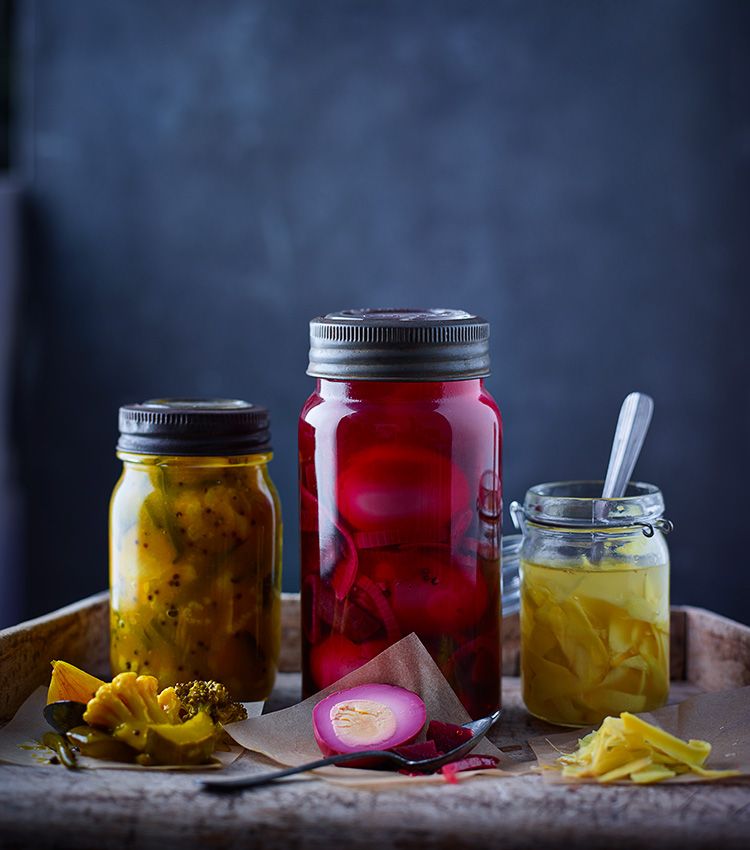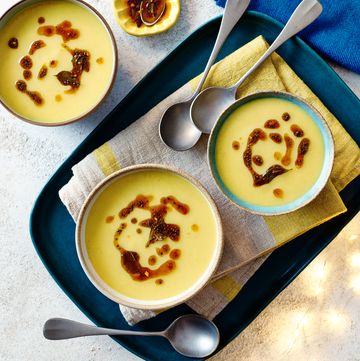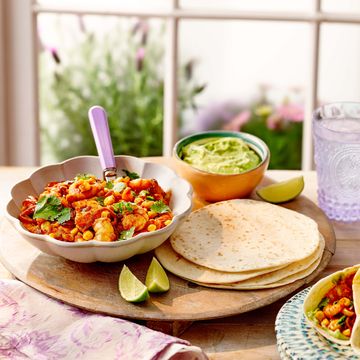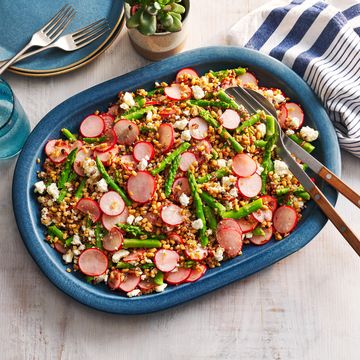Remember a few years ago when it was practically illegal to throw away the aquafaba (chickpea water) from a can of chickpeas when you could have been making a batch of meringues with it? While we were a bit on the fence over how well these aquafaba meringues really stacked up against their egg-based cousins, the GH food team have always been big fans of never wasting anything truly useful in the kitchen. Step forward, pickle brine, it’s your time to shine – because that salty, sharp liquid languishing in your pickle jar is a real culinary powerhouse, and there are even brands that have jumped on the bandwagon, like Vadasz who has just launched this very controversial Kimchi Pickle Shot.
Here are the food team’s favourite ways to use it…
Superior slaw
A traditional coleslaw, which is heavy on the creamy mayo dressing, can sometimes be overly rich, so a splash of vinegary pickle brine really helps to balance it out. Just whisk 1-2 tbsp of the brine into the mayo before stirring through your prepared veg. If you have a few leftover pickles in the jar, finely chop them, too, and add them in for a few more pops of flavour.
What to read next
Pickle martini
Savoury cocktails using different herbs and spices – sometimes even vegetables (see the Tomatini) – have been a growing trend for a while now, which mirrors our general obsession with all things umami in food. If you’re a fan of a Dirty Martini, then the Pickle Martini, which swaps olive brine for pickle brine, should be your next “It’s 5pm and it’s Friday” tipple. Another trick is to freeze pickle brine in ice cube trays and then use these to add an additional flavour dimension to a traditional Bloody Mary.
Marinade magic
Get this little trick under your belt before barbecue season starts later in the year. No need to be whisking together a whole load of ingredients to create a marinade – your pickle brine will bring everything to the party all in one! The garlic and salt (and whatever other seasonings your pickle brine contains) will work to flavour the meat, while the vinegar will do the job of breaking down the fibres to make it really tender. We’re particular fans of marinating chicken thighs in it, or using it for chunky steak cuts, such as sirloin or rib eye.
Peck of pickled peppers
Don’t just consider the brine from pickled gherkins or cornichons in the mix – pickled pepper brine also offers a bit of its own magic, often bringing added heat into the equation or a touch of sweetness, depending on which peppers you go for. We love Peppadew Sweet Piquante Peppers and also Sainsbury’s Sweety Drop Peppers for this. Experiment with our Pickled Pepper Meatballs with Zesty Rice recipe, which uses the pickled peppers in the meatballs and the brine in the dressing.
Recycle, recycle, recycle
And if none of the above take your fancy, the easiest way to use up leftover pickle brine is simply to reuse it. You don’t have to stick to the same base ingredients, either – feel free to experiment. Pickled cubed feta is great in salads, or try pickling some finely chopped red onions. These work wonders stuffed into toasties or with some grilled lamb, stuffed into warm pittas with salad and tzatziki.
A crack team of highly skilled food content producers, the GH Kitchen Team are Good Housekeeping’s resident recipe developers and all-round food obsessives. GH Kitchen Director Sarah Akhurst is our resident hosting pro and loves nothing more than putting on a foodie feast for friends. Senior Cookery Writer Alice Shields is a former pastry chef and baking fanatic who loves making bread and would have peanut butter with everything if she could. Lover of all things savoury, Senior Cookery Writer Grace Evans can be found eating nocellara olives at every opportunity, and will take the cheeseboard over dessert any time. With a wealth of professional kitchen experience between them, they’re dedicated to ensuring every Good Housekeeping recipe is the best it can be, so you can trust they’ll work every single time.




















